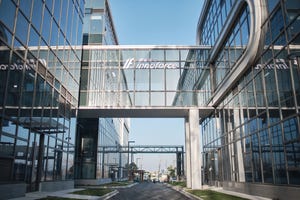
Ophthalmic gene therapy company Beacon Therapeutics has been launched by Syncona after a £96 million ($120 million) Series A funding round.
Syncona Investment Management, a British closed-ended investment trust dedicated to life science investments, has a 65.3% stake in the business. Beacon is Syncona’s third gene therapy firm focused on treating retinal diseases, following Gyroscope and Nightstar.
Beacon has been created by bringing together Applied Genetic Technologies Corporation’s (AGTC’s) late-stage X-linked retinitis pigmentosa (XLRP) program with two pre-clinical programs.

DepositPhotos/denisismagilov
“By acquiring AGTC and combining its late-stage program with highly complementary and innovative science from the University of Oxford and elsewhere, we have created an exciting new gene therapy company in an area where we have a great breadth and depth of knowledge and expertise,” said Chris Hollowood, CEO of Syncona.
“The creation of this unique company demonstrates Syncona’s creativity and the proactive and proprietary nature of our approach to sourcing new opportunities. We have the opportunity to leverage our expertise, track record and network to support Beacon Therapeutics as it develops gene therapies for people suffering from debilitating inherited retinal diseases. We look forward to working closely with Beacon Therapeutics’ exceptional management team to advance these assets through the clinic and towards patients.”
The series A financing round – led by Syncona, Oxford Science Enterprises (OSE), and other investors – will fund Beacon’s gene therapy candidates. This includes its lead program, AGTC-501, which is in Phase II clinical trials for the treatment of XLRP.
The two pre-clinical programs mentioned earlier include an intravitreally delivered gene therapy used to treat dry age-related macular degeneration (AMD) and the second program targets cone-rod dystrophy (CRD) and has been in-licensed from the University of Oxford.
Syncona said it will continue to support the company to “re-define” its clinical plan, help the firm roll-out its manufacturing plan ahead of commercialization, restructure costs, and expand the pipeline and team.
About the Author
You May Also Like









